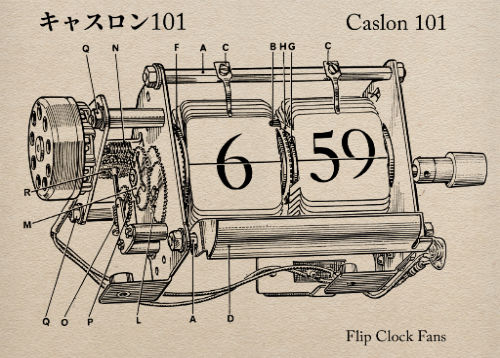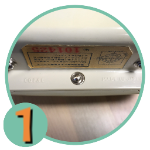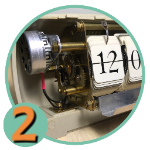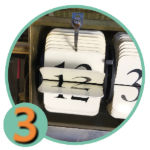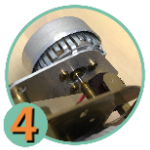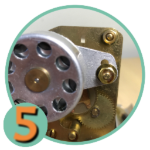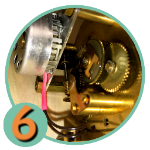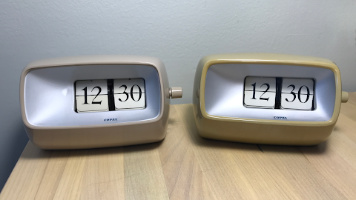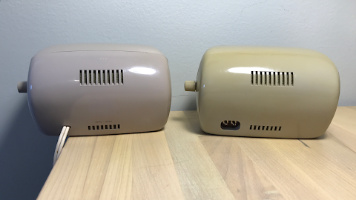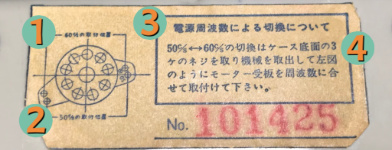Mais qu’est alors cette vérité historique, la plupart du temps? Une fable convenue.Ainsi qu’on l’a dit fort ingénieusement. Napoleon Bonaparte
Paraphrased: "History is a set of agreed upon lies."
Maybe that's true about the history of flip clocks too.
But what is certain, as the history of flip clock invention and marketing unfolded, few thought it worth the time to document it. For this reason, except for newspaper and magazine advertisements, and precious few journal articles, modern collectors of flip clocks have little to study when determining the history of a particular clock, except for attempts at logical conclusions based on their experience and the experience of others. In other words, often, "agreed upon lies."
What follows is my personal history of trying to find a particular journal about a certain flip clock. But the story contains an amazing plot twist, perhaps coincidence, maybe fate - but in the end it's the fantastic story of the revelation of a rare flip clock and a crazed flip clock fan.
 The first horological publication to my knowledge that printed a flip clock related article, was the Bulletin of the National Association of Watch and Clock Collectors, Inc. in October 1964. This comprehensive article by Charles O. Terwilliger, Jr contained the detailed history of the Plato Clock and its inventor, Eugene L. Fitch. That would be the first and last time the National Association of Watch and Clock Collectors mentioned a flip clock in their publication. I get the impression that they would like to pretend they never published it. Why would I say such a thing? Perhaps because the National Association of Watch and Clock Collectors Museum (the largest in North America) only features one flip clock - an early American Plato Clock - and they keep it in the "Novelty Clock" section among an assortment of odd clocks.
The first horological publication to my knowledge that printed a flip clock related article, was the Bulletin of the National Association of Watch and Clock Collectors, Inc. in October 1964. This comprehensive article by Charles O. Terwilliger, Jr contained the detailed history of the Plato Clock and its inventor, Eugene L. Fitch. That would be the first and last time the National Association of Watch and Clock Collectors mentioned a flip clock in their publication. I get the impression that they would like to pretend they never published it. Why would I say such a thing? Perhaps because the National Association of Watch and Clock Collectors Museum (the largest in North America) only features one flip clock - an early American Plato Clock - and they keep it in the "Novelty Clock" section among an assortment of odd clocks.
The second published article that I became aware of, was an alleged write up about a flip clock in the esteemed Horological Journal of April 1966.
Background History: Established in 1858 to promote horology, the British Horological Institute (BHI) affirms that their primary purpose today revolves around providing education.Toward this aim The Horological Journal (HJ) provides "peer-reviewed articles on historical and contemporary clock and watchmaking, servicing, repair, restoration and conservation." The BHI claims that the HJ is the world's oldest continuously published technical journal. First published in September 1858 the Horological Journal "has appeared monthly ever since – without fail." Newly published journals are available only to members of the British Horological Institute.

I had read somewhere (who knows where ... someplace on the internet) that the Horological Journal, dated April 1966, contained an article covering the Copal Caslon 201 flip clock. But no further details regarding this article could be found. Not only this, while there are numerous places to obtain back issues of past issues of the Horological Journal, this particular journal always seemed unavailable. I actually searched for years. It seemed like a conspiracy - the British Horological Institute must have tried to destroy all the evidence of this article. To the best of my knowledge this article represents the first and last mention of a flip clock in the annals of the famed Horological Journal. Most likely the author was exiled to the Island of Elba, or something.
Historical side note: In 1814, Napoleon Bonaparte, emperor of France and unarguably one of the greatest military leaders in history, abdicated the throne, and was banished to theisland of Elba in the Mediterranean Sea. In March 1815, he escaped this island exile and reclaimed his title, Emperor Napoleon I, in a period known as The Hundred Days War. However, in June 1815, he was soundly defeated at the Battle of Waterloo marking the end of French domination of Europe. Napoleon was subsequently exiled again, this time to the much more remote island of Saint Helena located 1,210 miles west of the coast of southwestern Africa. There he lived out the rest of his days. Saint Helena is where the quote at the start of this article reportedly was made on November 20, 1816. He died on May 5, 1821, at the age of 52 likely of stomach cancer although some conspiracy theories claimed he was poisoned.

After reading this little personal history of mine, you may be able to appreciate the shock and awe I experienced upon discovering an online vendor selling an actual copy of the April 1966 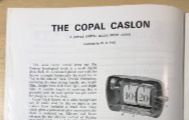 Horological Journal. The price, including shipping from Great Britain to the United States, was no more than $10.00. I would have paid 4-5 times that amount! I had been looking for this journal for about 5 years, I suppose. What I found upon receiving this rare volume, left me flabbergasted. On page 8 I found a 1193 word write up about a flip clock. As a comparison, the previously mentioned article about Plato clocks contained over 3800 words. The Title of this Horological Journal piece: "The Copal Caslon" written by H.G. Pike. Firstly - yes, I did count the words - there are computer programs that can do this. But secondly, and more importantly, this journal piece clearly did not cover the Caslon 201.
Horological Journal. The price, including shipping from Great Britain to the United States, was no more than $10.00. I would have paid 4-5 times that amount! I had been looking for this journal for about 5 years, I suppose. What I found upon receiving this rare volume, left me flabbergasted. On page 8 I found a 1193 word write up about a flip clock. As a comparison, the previously mentioned article about Plato clocks contained over 3800 words. The Title of this Horological Journal piece: "The Copal Caslon" written by H.G. Pike. Firstly - yes, I did count the words - there are computer programs that can do this. But secondly, and more importantly, this journal piece clearly did not cover the Caslon 201.
Of course ... I should have figured this out. The Copal Company produced the Caslon 101 "Japan's First Digital Clock" in 1965 (this according to the history section of the Nidec Copal Corporation web site). The author of the journal write up does not mention a model number, only identifying the clock as "the Copal Caslon." The article includes a nice detailed diagram of the clock as well as a mediocre quality picture of the clock with the front cover removed. The author, H.G. Pike, goes into great detail describing the clock. This pretty much sums up the bulk of the story aside from a few introductory comments, a lame pun, and ending summary information about the clock retail price and the local importer of the clock as well as some unnecessary stereotypical comments. It became clear to me that the clock described had to be a Caslon 101 - but it was also clearly apparent that the clock was not exactly like typical Calson 101s with which many of us are familiar.
Reviewing the Review
We will use the actual words of poor W.G. Pike then see how they compare to known specimens of the Copal Caslon 101.
"THE COPAL CASLON
A SIMPLE DIGITAL CLOCK FROM JAPANreviewed by W. G. PIKE
The most recent arrival from our Far Eastern horological rivals is a small digital desk clock. In a coloured plastic case with the figures arranged horizontally the clock has an "up to the minute" look."
Comments: Well ... I actually do appreciate a play on words or a pun ... But besides this, it seems curious that he refers to the Japanese clockmakers as their "rivals." Not their cohorts, friends or associates - but their rivals. This is not the first time that I have picked up on persistent animus towards Japan within writings from the 60s and 70s. We have to remember that historically, the Japanese were the enemy to many during World War II. At the time this article was written, the war had ended only about 20 years previously.
"Large black figures on a white background can be easily read by day or night as the makers have included a small neon lamp which gives a permanent glow immediately the clock is switched on. Minutes and hours advance by the old-time method of flipping over small cards — a method with which many older readers will be familiar — but unlike earlier clocks the driving force in this clock is a small synchronous motor."
Comments: This sounds familiar. The grandfather of all flip clocks - The "EverReady" Plato Clock and the many European variants of this early flip clock from this period (manufactured as early as 1903) employed wind up brass clock works.
"To take the clock apart requires no skill. A single screw at the base is all that holds the halves of the case together, and two screws hold the complete movement in the back half of the case."
Comments: Ok, this is a little different. Typical Caslons have two screws holding the front and back pieces together. And there's a little bit of a trick to get them apart without damaging the case because they snap together and hold firmly.
"The general layout is tidy and the extensive use of brass is conspicuous."
Comments: He said, "tidy." Yes, the Caslon clocks used up most of the space inside the clock. These were neat little clocks - at the time a novel, compact little design. We shouldn't take this for granted. The Calson 101, Japan's earliest flip clock, was designed by the now famous Japanese designer, Riki Wantanabe. Smooth and compact - these clocks were trend setters.
Background History:
The designer of the Copal Calson 101 - the world-renowned designer, and Pioneer of Japanese design, Riki Wantanabe
ジャパニーズデザインのパイオニア 渡辺力Riki Wantanabe 渡辺力 (1911 - 2013) was a distinguished Japanese industrial designer (often compared to the American designers Charles and Ray Eames) who passed away in 2013 at
101 years of age. Considered a pioneer of post-Second World War Japanese design in a time when the word or concept of "design" was little used in Japan, Wantanabe was initially made famous by furniture design. The Watanabe name eventually became established and well respected in the clock and especially the watch design world. You can still find new Riki Wantanabe inspired watches, particularly by Seiko.
As a pioneer of modern Japanese design, Riki Watanabe made great contributions to the recognition of design in Japan, such as the establishment of the Japan Industrial Designers’ Association. He received many awards including the Milan Triennale Exhibition Gold Award, the Mainichi Design Award, and the Japanese Medal of Honor with purple ribbon awarded by the Government of Japan.
In 1964 Wantanabe designed the COPAL Caslon 101 (キャスロン101). As described by Wantanabe, the clock is a leaf type table clock made by applying camera shutter and motor technology. A typeface called Caslon was used for the digits, from where the product derives its model name. Marketing of the clock to the public began in 1965. It should be noted that Riki Wantanabe later also designed the Calson 601 (1967) and the Copal Model C61 (1973).

Now back to Mr. W.G Pike
"For the benefit of those who are not conversant with the principal of this clock or its older counterpart — a vertical clock sometimes called the "Ever-ready" — the following explanation will help."
Comments: Mr. Pike is speaking here of what we collectors most often now call the "Plato Clock." It seems that he may have not been familiar with the later flip clocks produced by the New Haven Clock Company of Connecticut. We must not forget - the internet did not exist when W.G. penned this article. For certain, poor Mr. Pike initially banged out this piece on an old manual typewriter. A little background history - The earliest flip clocks, the Plato Clocks, looked like 18th century carriage clocks. Years later, in the late 1930s The New Haven Clock Company produced flip clocks that have been said to have an Art Deco look by some. These were made of wood, metal and glass, and besides the digits, would look like antiques to the modern eye. The Plato Clock's numbers flipped horizontally, like the pages of a book, while New Haven clocks essentially flipped downward like flip clocks of today. It's important to understand that the Japanese did not invent the flip clock, but they did design the first flip clocks that arguably kicked off the flip clock craze of the 1970s. In addition, Copal made most of the clock mechanisms used by most makers of clocks and clock radios worldwide. These clock mechanisms and synchronous motors were, without question, that good.
"The hour cage holds only twelve hours: but each hour is allotted five cards so that during one complete revolution of the minute cage five hour cards are flipped over."
Comments: Now, this is strange. There are many Caslon 101s with 24 hours and others using the 12 hr system more common in the United States, with even some clocks having both AM and PM cards. And in both of these, there are typically only 2 hour cards per each hour in these clocks - not five!
"The low speed, self-starting synchronous motor which runs at 333 1/3 r.p.m. at 50 cycles per second is fixed to a triangular shaped aluminium plate by three screws. "
Comments: Thank you, Mr. Pike - Many flip clock fans have wondered about the speed of these little Copal synchronous motors - and you have confirmed this for us. We now know that the 50 Hz version runs at 333 1/3 RRM and the 60 Hz version at 400 RPM. But, what is this about a "triangular shaped aluminium plate and 3 screws?" The known models have two screws that secure what is designated as a "Copal II" motor into the side of the clock.
"One of the more interesting features of this clock is the ease with which it can be altered to operate on a frequency of either 50 c/s, as used in this country, or 60 c/s as used in the United States and some other countries. Alteration is simple. First remove the nuts (Q) holding the motor base plate to its supports. At one end of this plate the figures 50 and 60 are engraved. When the local frequency has been determined place either the 50 or 60 against the pillar and replace the nuts. Changing the base plate from the 50 position to the 60 position means that the worm wheel on the rotor arbor will engage the larger of the two fabric wheels (R). With the base plate in the 50 position the worm wheel will drive the smaller of the two fabric wheels."
Comments: No Calson 101s that I had previously encountered had the ability to be switched between 50 and 60 Hz operation. While many other models of flip clocks do have this ability via a throw switch that changes the gearing before reaching the clock mechanism, the Caslons were typically made either for use with 50 or 60 Hz - Not both. And in known versions of these clocks there are no worm gears or "fabric wheels" and no way or reason to manually alter the position of the motor. These reported features would be very foreign to your typical Copal Caslon flip clock collector of today.
"This unusual clock has the equally unusual name — "Caslon" — and it comes to us from the Copal Co. Ltd., of Tokyo."
Comments: He is right, here. The Caslon 101 was unusual in that it was a trend setter. But the name "Caslon" cannot be said to be strange or uncommon. But due to the lack of internet access in 1966, again we will give Mr Pike a pass on his assertion that the name "Caslon" is unusual. However, it seems that he could have picked up an Encyclopedia and took a look. "Caslon" describes a font designed by William Caslon in 1722. Historically this font appeared extensively throughout the British Empire in the early eighteen century. Furthermore, the Caslon font received wide usage in the American Colonies and actually served as the font style that appeared on the U.S. Declaration of Independence! The Copal Company selected the famous Caslon font number style for the digits of their earliest clocks - a font which still looks great in these clocks - with the clock receiving its model name from this font.
"The only parts that suggest its Far Eastern origin are the two small squares of woven material covering the ventilation louvres. They resemble little Japanese rush mats."
Comments: Firstly, these "rush mat" looking pieces can only be practically observed from the inside of the clock. But more importantly, at this point in history, the Japanese industrial complex had revved up to full speed and was a modern industrial country. Japan to American in the 60s and 70s held the role that China plays to us today - it seemed like everything was being produced in Japan. By the late 1970s to early 1980s they were on the road to taking over the television market in the United States. In addition, the Copal Company, without question, were the worldwide experts in the production of camera shutters - and this was only the beginning. To equate Japanese style and manufacture to rush mats? A bit stereotypical I'd say... Clearly this wouldn't be tolerated these days. Again, we're going to give Mr Pike a pass. It was a different time, back in the late 60s. And we can't expect Mr Pike to be up on design trends outside of British horology. Also, we suspect that by the time the USA landed a man on the moon only a little over 3 years following the publishing of his article, he had probably already been exiled from Great Britain for his part in putting a flip clock write up in the Horological Journal.
"The clock retails at £9 19s. 6d. Expensive? It rather depends on who is buying it."
NOTE: £9 19s. 6d. is the proper way of writing "9 pounds 19 shillings 6 pence."
Comments: This, "pounds shillings and pence thing", was the old style English monetary system. Prior to February 15, 1971 there were 12 pennies (pence) to the shilling and 20 shillings to the pound (so that would be 240 pence to the pound). Since that time, the pound went decimal and there are 100 pence to the British pound. Be that as it may, the price quoted by W.G. would be just over $195 in today's dollars.
The Plot Thickens
And now - here's the plot twist I alluded to earlier. The very day the Horological Journal arrived at my home, I noticed a very unusual clock for sale online. The seller - a well-known and very knowledgeable collector restorer, and re-seller of flip clocks - Robert Jaggers - known online as flipclock.nl or flipclock.eu. He indicated that the clock for sale looked like a Caslon 101, but not exactly. With all his experience, he confided that he had never seen such a clock before and doubted that he would ever find another. I stared in disbelief. No way! Could this be possible? Less than one week later that very clock made it into my hands.
I figured that the clock might be similar to the clock described in the Horological Journal. Maybe the article described the first generation, and this clock I just purchased would be the 2nd generation, and the ones we're more familiar with perhaps could represent the 3rd. But no ... After examination I realized that the clock was exactly as described in the Journal. I had in my hands a piece of flip clock history.
Do you get it?
I would venture to say, that if you made it this far in story, you get it. I hope so. Imagine me pointing to the journal, pointing to my newfound clock relating my good fortune to family and friends who well ... let's just say that they are not flip clock fans. They nodded their heads, gave me an unenthusiastic "wow, that's cool" and ... that was it. They obviously did not get it. This clock is an awesome find and probably belongs in a flip clock museum ... if there were such a thing. Ah well.
Let's review the clock we now have in our hands and compare it to the one described in the Journal article:
1.Here's the single screw holding the two halves of the case together. And disassembly is a snap since the halves open right up after you remove the screw.
2. Let's see .... tidy layout and extensive use of brass - check!
3. The hours side only pictures 12 hours and each hour has five cards. Look behind the 12s to see a "rush mat."
4. The self-starting Copal motor is affixed to the mechanism by a triangular aluminium plate by three screws.
Motor History: It bears mentioning that this motor is probably what we could call the "Copal I" motor. As many of you know, copal motors in most flip clocks have the words "Copal II" stamped on them. If you've been wondering, I would suspect that this would be what we could call the "Copal I". While the Copal II motors can only effectively be lubricated from the outside of the motor, this version can (and probably should be) lubricated from the inside as well - since it is so accessible and apparently appropriate.

5. The clock motor plate has two sets of screws and can be re-positioned - the plate is clearly stamped with "50 Hz" and "60 Hz."
6. The two worm gears and two "fabric" gears are clearly present and accounted for.
ding - ding - ding - ding
It looks like we have winner.
Other differences
Size: The earlier Caslon detailed here has a thicker case overall which gives it increased heft compared to the later model. You can see the thickness difference most clearly around the clock face.
The power supply cord: The cord is plugged in to two pins and can be removed, unlike the clock with which we're more familiar. Mr. Pike does mention this in the article.
The bottom label: This is curious because this clock is apparently a 220-240 Volt clock. I know because when plugged into 120 V the bulb was considerably dimmer and when I powered it with 230 Volts, the clock did not burn up. Note the high level of scientific investigative techniques employed here. The label is in Japanese. Perhaps it was intended for Japanese living outside of the country, because at that time (as today) Japan used 100 Volts for their mains (household) electricity.
The label is translated as follows:
1. At left above the motor diagram, the top wording is translated: "mounting position for 60 c/s (Hz)"
2. Below this: "mounting position for 50 c/s (Hz)"
3. At right, at the top in bold: "Switching by power source frequency".
4. Finally, the paragraph below this: "For switching between 50 c/s and 60 c/s please set the motor strike plate as indicated on the diagram at left by taking out the three screws on the base of the case, then the machine."
Now I'd like you to consider the serial number on this clock. It reads "101425." I would like to put out there that this means that this was only the 425th Caslon 101 ever produced, making this clock even more rare and valuable. I'm thinking that if we all decided to agree upon this ... it would make it so. So .... What do you say?
Let's make some History!
REFERENCES / NOTES:
1. The Napoleon Bonaparte quote more literally translates to "What then is, generally speaking, the truth of history? A fable agreed upon. As it has been very ingeniously remarked, ..." However, often people will assert that he said, "History is a set of lies agreed upon." I, however, have chosen to update the language to a new and improved version - "History is a set of agreed upon lies." I love this quote because the history of what he actually said and what people say he said, proves the wisdom of the quote (that in all truth .... he really did not say).
10 Napoleon Bonaparte Quotes in Context
To comment about this article - please go to the forum entry.

